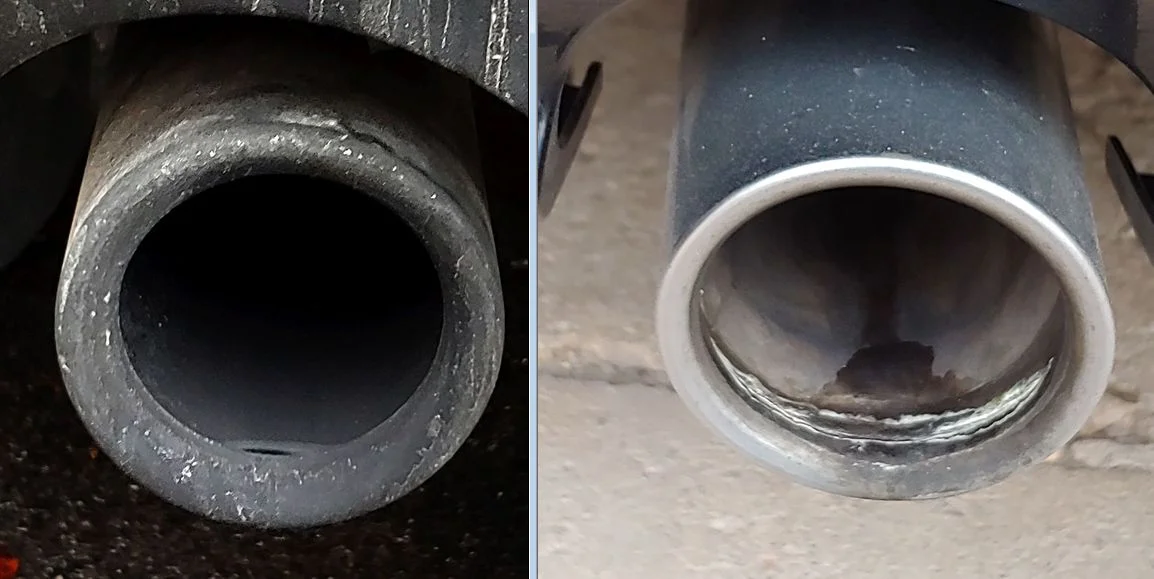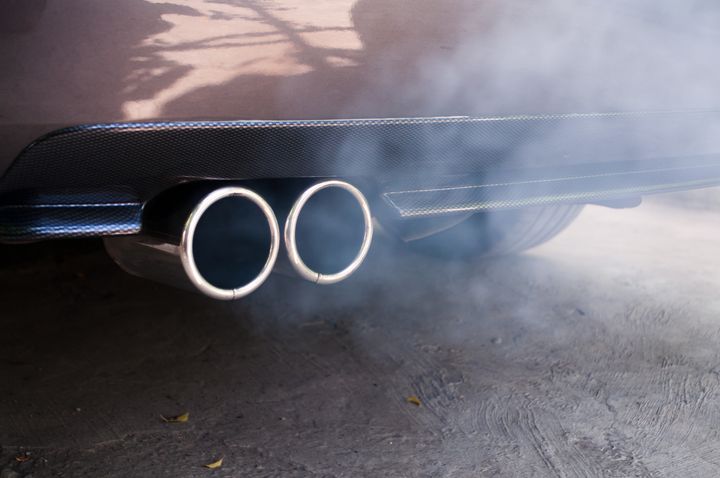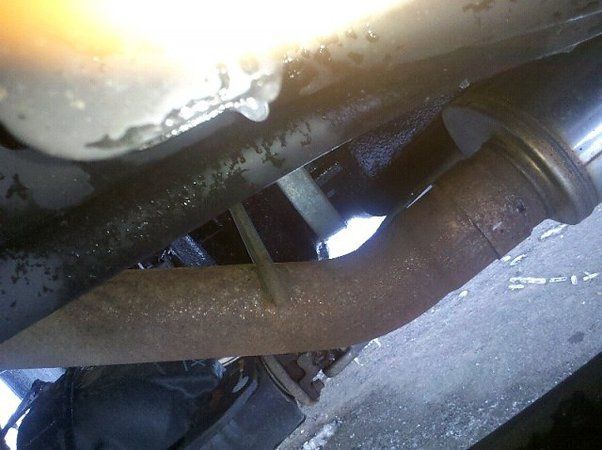


Black soot or smoke coming from the exhaust pipe is a common issue that can indicate various underlying problems with a vehicle's engine or emission control systems. This phenomenon is typically caused by an imbalance in the air-fuel mixture, leading to incomplete combustion and the release of unburned fuel particles as soot

One of the most frequent culprits behind black soot in the exhaust is a rich air/fuel mixture. This means that there's too much fuel being burned compared to the available air, leading to incomplete combustion and unburnt fuel exiting as soot.
Here are some specific causes of a rich mixture:
| Cause | Description |
|---|---|
| Dirty air filter | Restricting airflow |
| Faulty fuel injectors | Delivering too much fuel |
| Vacuum leaks | Allowing unmetered air to enter |
| Incorrect fuel pressure regulator settings | Causing an imbalance |
| Malfunctioning engine sensors | Providing incorrect data to the engine computer |
Another potential cause is excessive engine oil burning and entering the combustion chambers. This can happen due to:
Worn piston rings
Valve guides
Other internal engine wear allowing oil to slip past and burn, resulting in black soot deposits in the exhaust.
When a customer brings in a vehicle with black soot in the exhaust pipe, my first step is to gather information and observe the symptoms. I'll ask about any noticeable black smoke from the tailpipe, especially during acceleration, which can indicate a rich condition. Then, I'll inspect the air filter and replace it if it's dirty, as this can be a simple fix for some cases.
Next, I'll hook up an exhaust gas analyzer to check the air/fuel ratios and look for any abnormal readings. This diagnostic tool can provide valuable insights into the engine's combustion process and help pinpoint the root cause of the issue.
If the analyzer doesn't reveal any obvious issues, I'll move on to checking for engine codes related to faulty sensors, injectors, or vacuum leaks. These components can all contribute to an imbalanced air/fuel mixture and, consequently, black soot in the exhaust.
In cases where excessive oil burning is suspected, I'll perform a compression and/or leakdown test to check for worn engine components that could be allowing oil to slip past and enter the combustion chambers.

Once the root cause has been identified, it's time to address the issue. For a rich air/fuel mixture, I may need to:
Replace faulty injectors, sensors, or the fuel pressure regulator
Repair vacuum leaks
Adjust the fuel trim or reset the engine computer after fixing the underlying issues
If excessive oil burning is the culprit, the repairs can be more extensive and costly:
Replace worn piston rings
Repair or replace valve guides/seals
Repair or replace other worn engine components as needed
Prevention is key when it comes to avoiding black soot buildup in the exhaust. Here are some preventive measures:
Follow the manufacturer's recommended maintenance schedule
Use high-quality fuel and the correct engine oil
Avoid excessive idling or high engine loads when the engine is cold
Address any drivability issues promptly to prevent further wear
The cost of repairs can vary significantly depending on the root cause and the extent of the work needed:
| Repair | Cost Range |
|---|---|
| Replacing an air filter | $20 - $50 |
| Major engine work for excessive oil burning | Thousands of dollars for parts and labor |
However, it's important to address the issue promptly, as ignoring black soot in the exhaust can lead to further damage and more expensive repairs down the line. In some cases, it may even affect the vehicle's emissions and potentially result in failing an emissions test.
Black soot in the exhaust pipe is a common issue that can stem from various underlying problems. As a mechanic, my role is to diagnose the root cause accurately and provide the appropriate solutions. Whether it's a simple fix or a more extensive repair, addressing the issue promptly can prevent further damage and ensure your vehicle runs smoothly and efficiently.
Remember, preventive maintenance is key to avoiding these types of issues. By following the manufacturer's recommendations and addressing any drivability concerns promptly, you can help keep your vehicle in top condition and minimize the risk of black soot buildup in the exhaust pipe.
An overly rich air/fuel mixture, where too much fuel is being burned compared to the available air, leads to incomplete combustion and unburnt fuel exiting as soot. Faulty components like injectors, sensors, or vacuum leaks can cause this imbalance.
A dirty air filter restricts airflow, creating a rich condition by limiting the amount of air available for proper combustion. Replacing a clogged filter can sometimes resolve the soot buildup.
An exhaust gas analyzer is a crucial diagnostic tool that can provide insights into the engine's combustion process and help pinpoint the root cause of an imbalanced air/fuel mixture.
Excessive oil consumption and the presence of bluish-gray smoke from the exhaust can be signs of worn engine components allowing oil to enter and burn in the combustion chambers.
A compression test or a leakdown test can help identify worn piston rings, valve guides, or other internal engine components that may be allowing oil to slip past and burn, causing soot buildup.
Ignoring the issue can lead to further engine damage, more expensive repairs down the line, and potentially failing an emissions test due to increased pollutants.
Following the manufacturer's recommended maintenance schedule, using high-quality fuel and oil, avoiding excessive idling or high loads when the engine is cold, and promptly addressing any drivability issues can help prevent soot accumulation.
Major engine work to address excessive oil burning, such as replacing piston rings, valve guides, or other worn components, can cost thousands of dollars in parts and labor.
Yes, excessive soot buildup can increase the vehicle's emissions and potentially cause it to fail an emissions test due to the increased pollutants being released.
An incorrectly set or malfunctioning fuel pressure regulator can cause an imbalance in the air/fuel mixture, leading to a rich condition and increased soot production.

Sarah isn't your average gearhead. With a double major in Mechanical Engineering and Automotive Technology, she dived straight into the world of car repair. After 15 years of turning wrenches at dealerships and independent shops, Sarah joined MICDOT to share her expertise and passion for making cars run like new. Her in-depth knowledge and knack for explaining complex issues in simple terms make her a valuable asset to our team.













